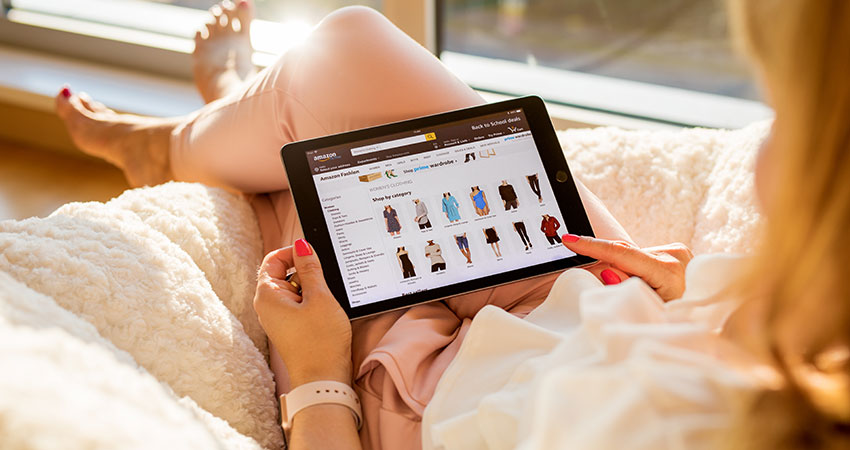Amazon is continuing to dominate in total apparel sales, not just online, according to a new report from CoreSight, which reports 70% of apparel shoppers bought clothing or footwear on its marketplace in the past 12 months, up from 60% a year ago.
This compares to 51.2% who said they bought clothing or footwear at Walmart in the past year, 44.6% who did so at Target and 35.3% who bought at Kohl’s.
In the past year, just under 80% of Prime members said they bought clothing or footwear on Amazon, nearly double the rate of non-Prime members at 42%, CoreSight reported. The findings were based on a late February 2020 survey of 1,934 U.S. internet users aged 18 and over who had purchased clothing or footwear in the past 12 months.
This was before apparel purchasing went down an astounding 50%+ in March, according to U.S. Census Bureau figures, when coronavirus put a vice grip on the economy.
“We are seeing more cross-category purchasing,” CoreSight said in the report. “We found the average Amazon apparel shopper this year said they had purchased 2.7 clothing and footwear categories on the site vs. 2.3 in each of the prior two years we conducted this survey.”
Interestingly, Nike was the top-selling apparel brand on Amazon in the past year, even though the company decided to drop its partnership with the ecommerce giant last November. Even though Nike itself isn’t selling there, plenty of third-party merchants are offering its popular products on the site.
Amazon has not yet shaken off the discounter tag, as nearly 43% of respondents told CoreSight they expect to always pay less than full price for apparel when shopping on the platform. “This perception could support market share gains by Amazon during and after the coronavirus crisis,” CoreSight said.
The results from the CoreSight survey point to a possible peaking in apparel for Amazon. For instance, the number of respondents saying they “expect to buy” on its marketplace in the next 12 months is usually more than those reporting they “have bought” in the past 12 months, but this year the figures were roughly the same.
“This suggests that Amazon could be experiencing a plateau in shopper numbers for fashion,” CoreSight said. “This would align with the now-high shopping rates for Amazon and implies that the site needs to drive up purchasing frequency and/or average basket size in order to establish further gains in market share.”
In terms of retailers shoppers switched from in order to purchase apparel on Amazon, Walmart was cited the most often by respondents to CoreSight’s research at 39.8%, followed by Target (37.7%) and Kohl’s (29.7%).

